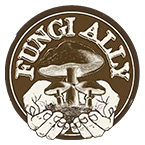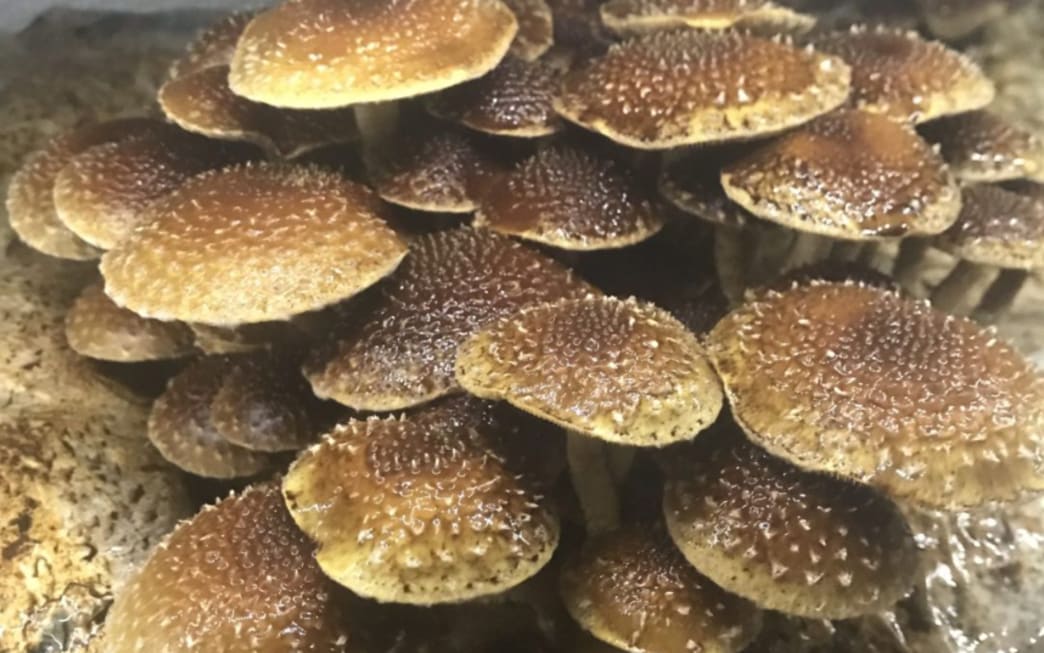Many interested mushroom lovers have asked, “What are chestnut mushrooms?” Today we are telling the tale of the pholiota adiposa, including how to grow it at home
What are chestnut mushrooms? Chestnut mushrooms (Pholiota adiposa) are a newer species of gourmet, edible mushrooms being cultivated in the US. These mushrooms look really beautiful when they start growing because they have characteristics like a fractal star or a flower.
After a few days, the chestnut mushrooms develop a nice brown color and look more like a mushroom than a flower. Chestnut mushrooms tend to grow in clusters which are easy to harvest. Chestnut mushroom growing kits can fruit between ¾ of a pound to a full pound during its first flush. A second flush is typically available from the same kit about two weeks later. The chestnut mushrooms have a rich, nutty umami flavor, and they may have a slight crispiness to them once cooked.
What are chestnut mushrooms? Background information on the pholiota adiposa
The word “pholiota” means scaly in Latin, and “adiposa” comes from the name of lard or grease. The caps of these mushrooms have a scaly texture and the surface of the cap has a greasiness to it. The caps will feel slimy if wet.
In the wild the chestnut mushrooms primarily grow on beech trees, although they have also been found on oaks and poplars.
The caps of the mushrooms are yellow with brownish scales and there may be veil fragments present before they are ready to harvest. The stems are yellow which become a rust-brown color closer to the base. Oftentimes the stems will join together where they meet the substrate. You will often find this happening with our chestnut mushroom growing kit.
Chestnut mushrooms may help support you
Chestnut mushrooms could be considered a medicinal mushroom like many others. Below I’m going to address a variety of studies that have looked at the efficacy of chestnut mushroom.
The following information comes from a great book on mushrooms called The Fungal Pharmacy by Robert Rogers. Here is the first worthy piece on P. adioposa.
“Work in China, where it is cultivated, shows that the sticky substance on the mushroom’s surface contains polysacharose A."
The author continues by talking about how that substance may help support immunity.
Another interesting piece of information is on its potential antibacterial or antimicrobial characteristics. The author writes:
“It may prevent infection from Staphylococcus, Pneumonia bacillus, and Tuberculinum mycobacterium. Dulger et al (2002b) found 60 percent methanol extracts possess significant antimicrobial activity against Bacillus subtilis, E. coli, S. aureus, Streptococcus pyogenes, and Mycobacterium smegmatis.”
This information can be found on page 330 of the book, in case you want to read more about it. As an additional note, The Fungal Pharmacy is a great book for anyone interested in the healthful constituents of mushrooms and the studies that have been conducted on mushrooms to find these characteristics. There is a wild array of mushroom species that are covered in the book, including many species that you probably haven’t even heard of. Definitely consider adding this helpful book to your personal library.
Growing the chestnut mushroom at home
There are multiple ways to grow chestnut mushrooms at home. We offer mushroom growing kits, which are the easiest way to grow these mushrooms. We also provide colonized grain spawn, sawdust spawn, and plug spawn for growing chestnut mushrooms with various substrates. If you are choosing to make your own inoculations, we recommend using oak or maple trees.
Chestnut mushrooms like cooler temperatures than some other mushrooms. We consider this mushroom to be middle of the road when it comes to its ease of cultivating. It is not an easy mushroom to grow (like blue oysters) nor is it a difficult mushroom to grow (think chicken of the woods).
A desired substrate for growing chestnut mushrooms is supplement sawdust or hardwood pellets. For fruiting the chestnut mushrooms, a temperature between 50-70 degrees F is desired.
Here is how to grow chestnut mushrooms from a grow kit: First, cut a large “X” on each broad side of your growing kit. Spray water on the areas where you have made cuts. This will help keep the humidity up. Each one of our mushroom growing kits are 10 pounds of colonized substrate and certified organic. We expect that you will be able to fruit 2-4 pounds of fresh mushrooms from the kit throughout its lifespan.
Get your chestnut mushroom growing kit today! You can have your first flush within two weeks of starting the kit. Chestnut mushrooms can be used in any way that you would use shiitake mushrooms while preparing meals.
Have you tried the chestnut mushroom before? Do you have a better understanding of this newer mushroom now?
-----
Content & Optimization by Chris Sturk

